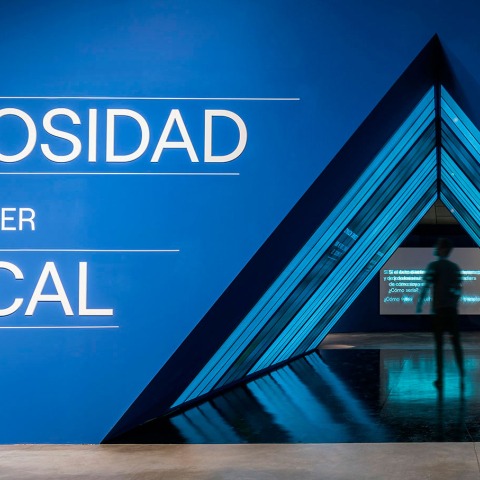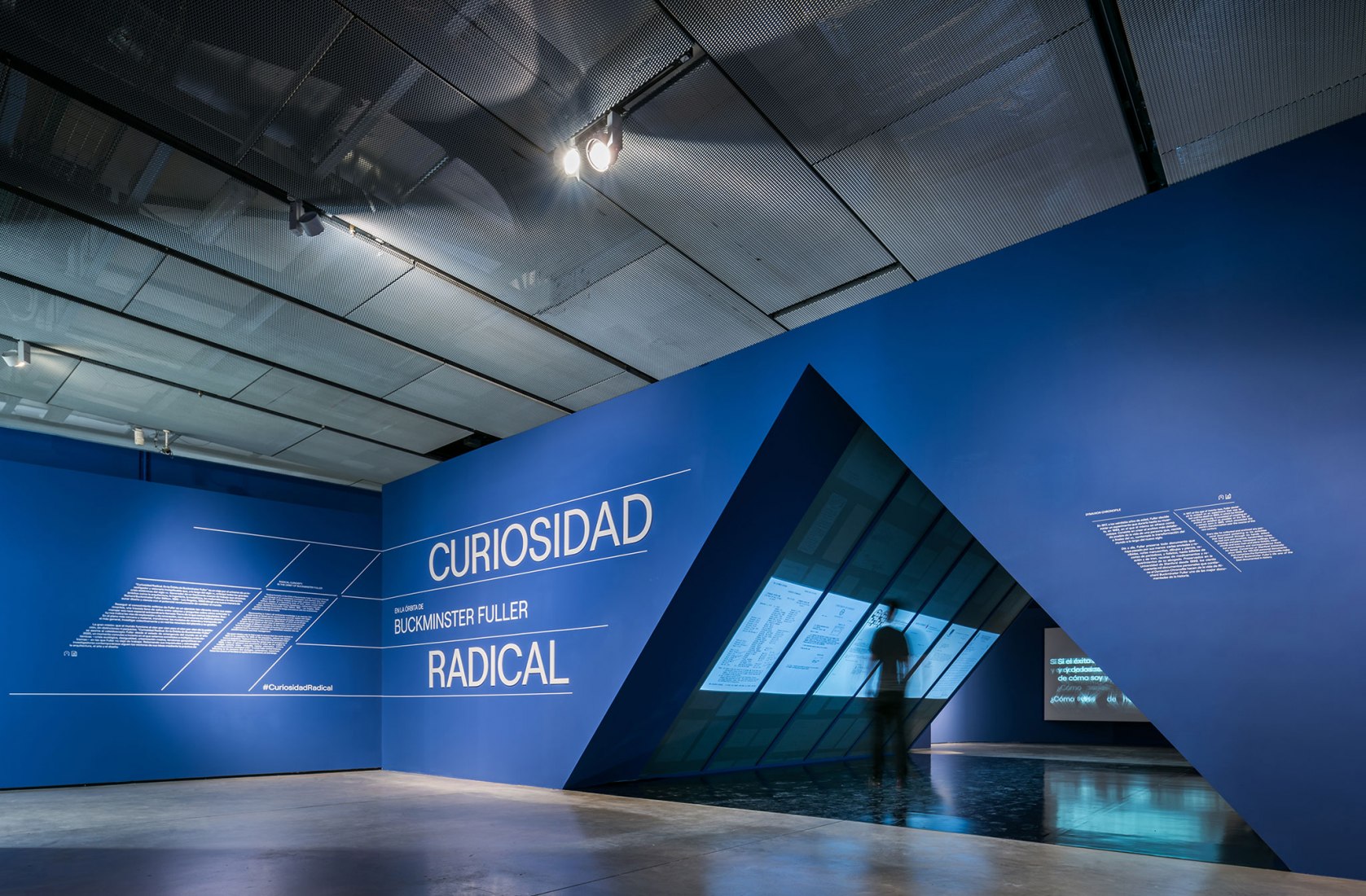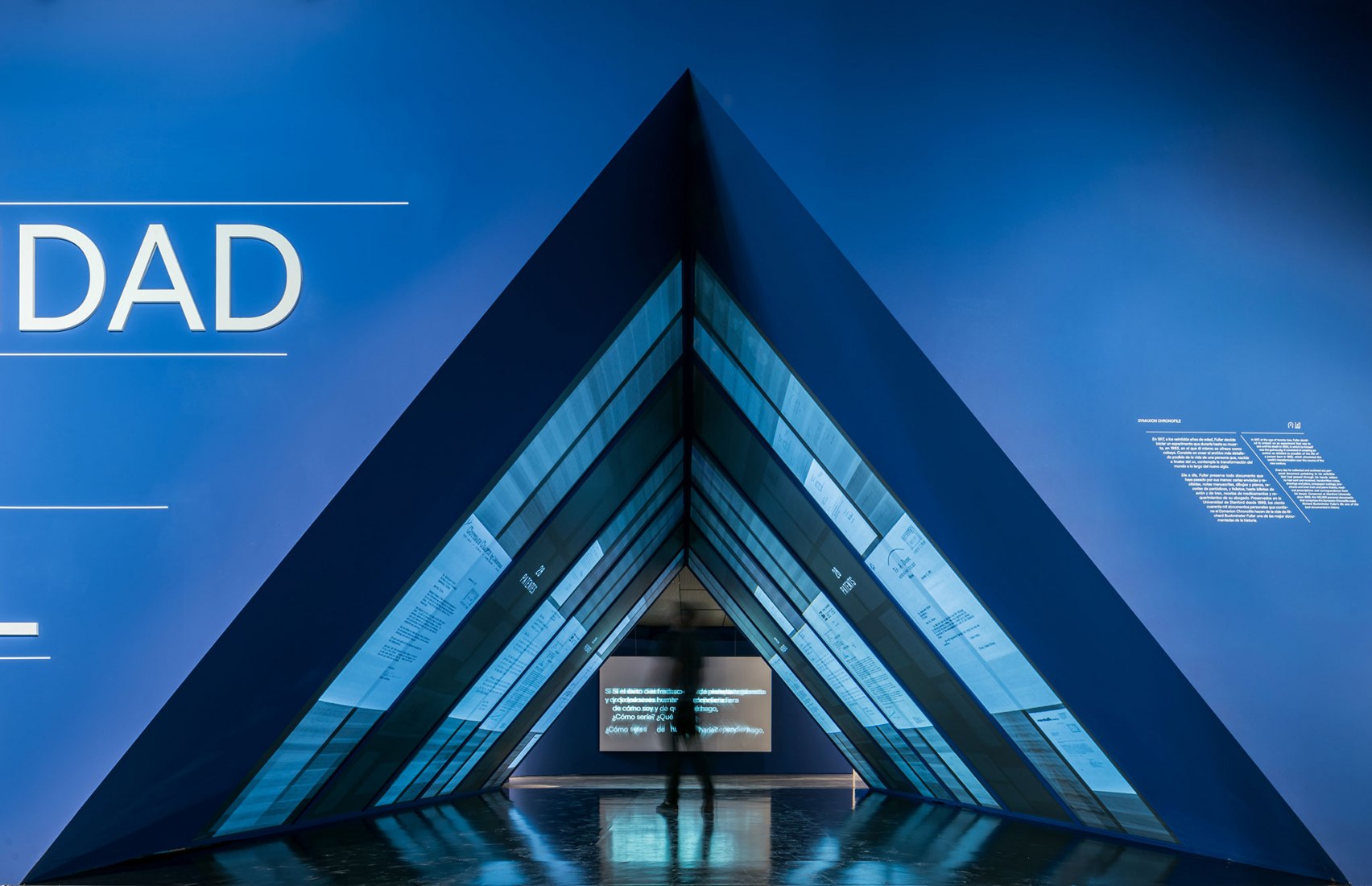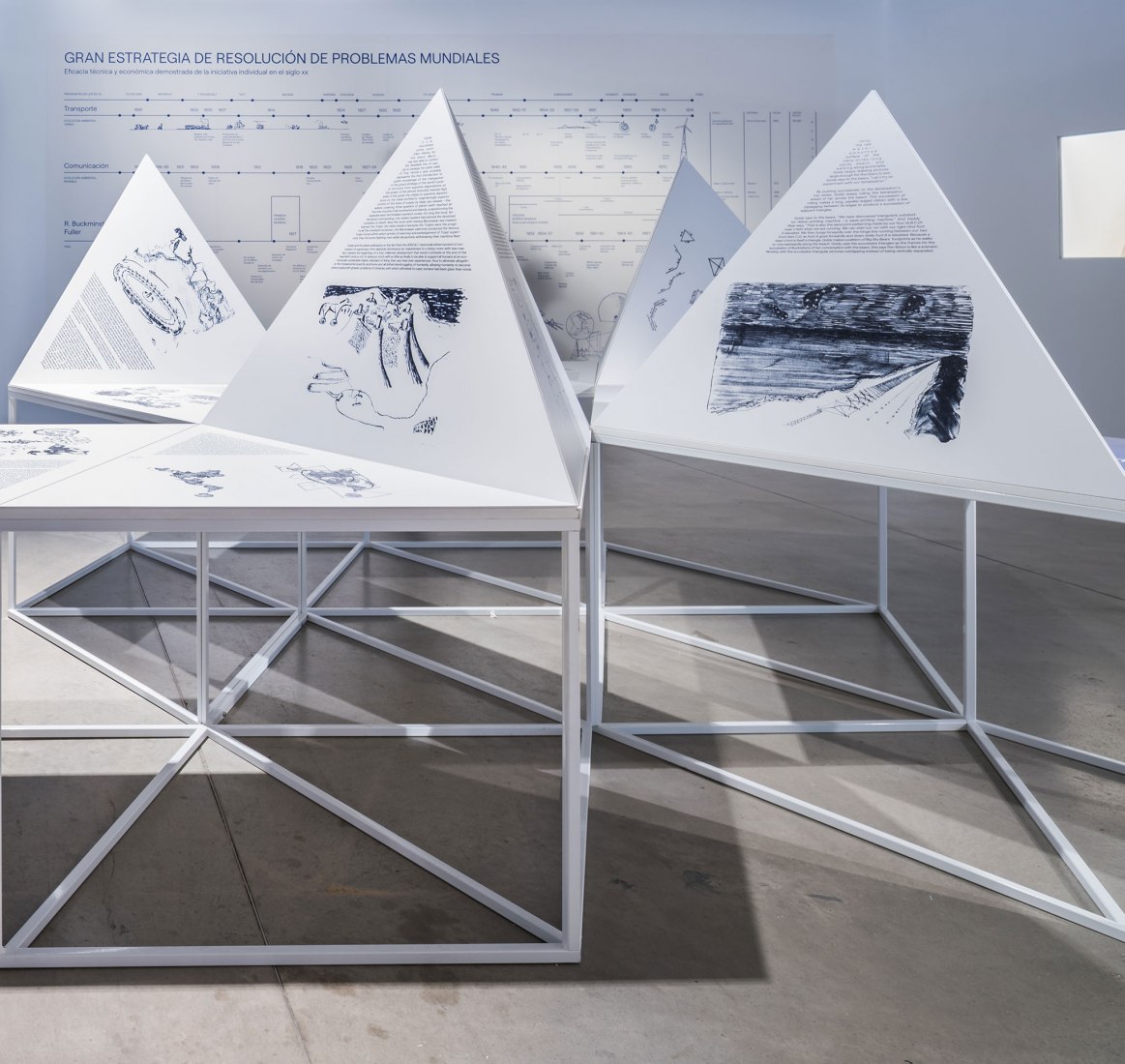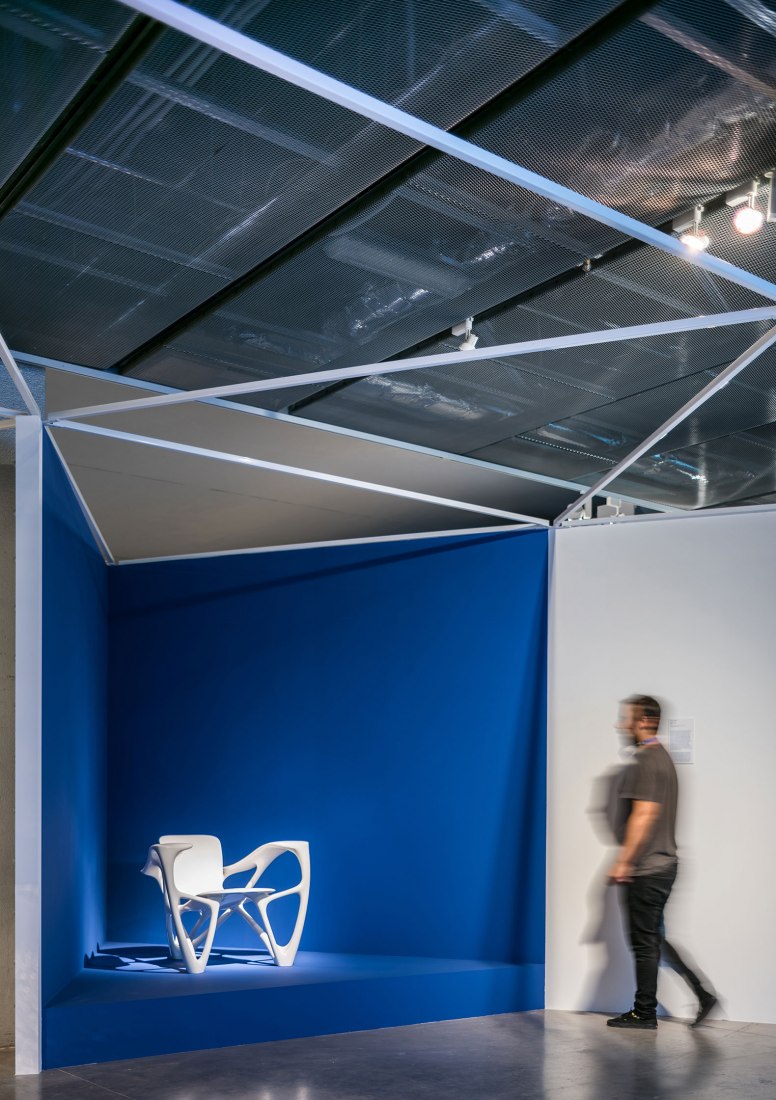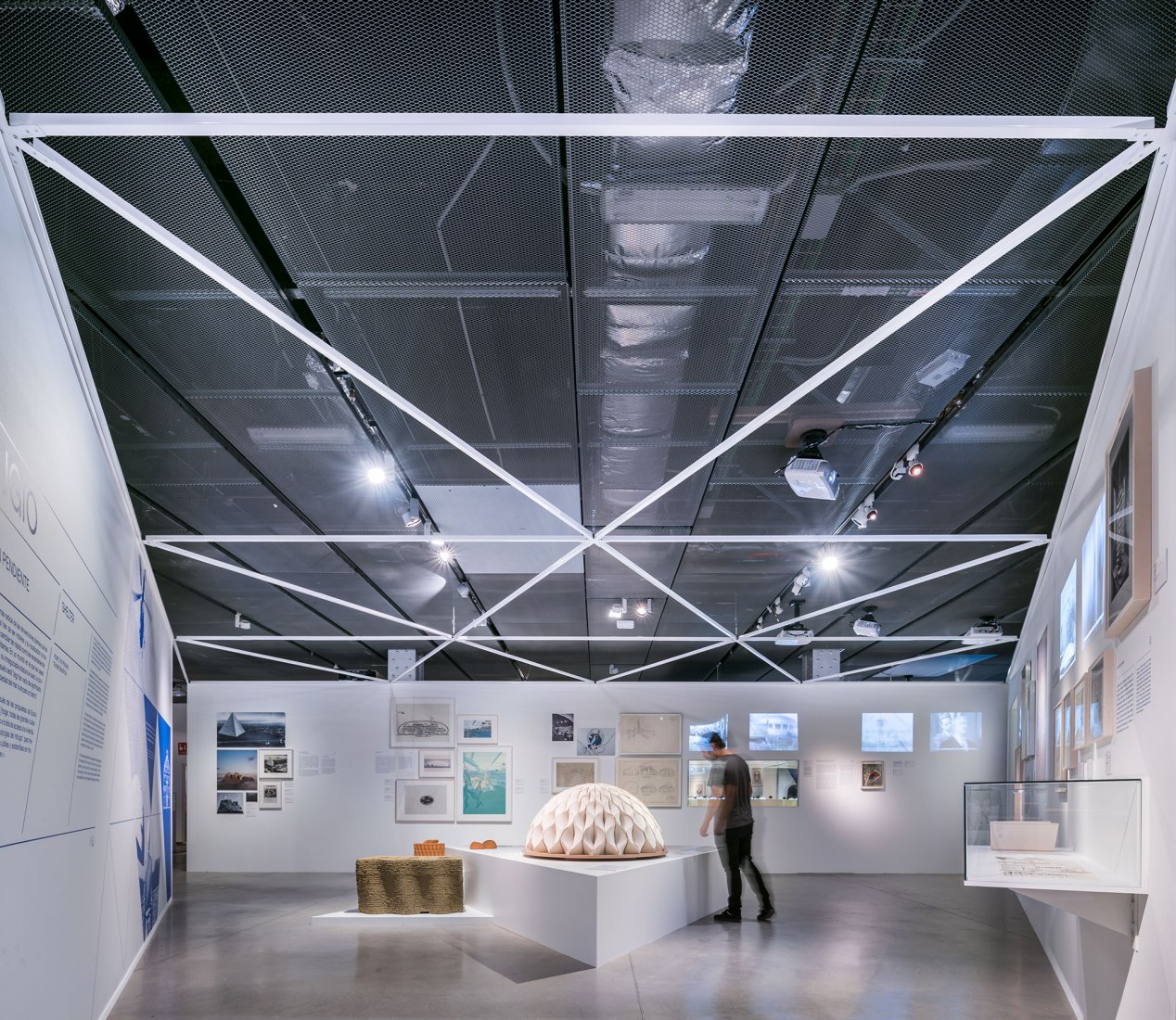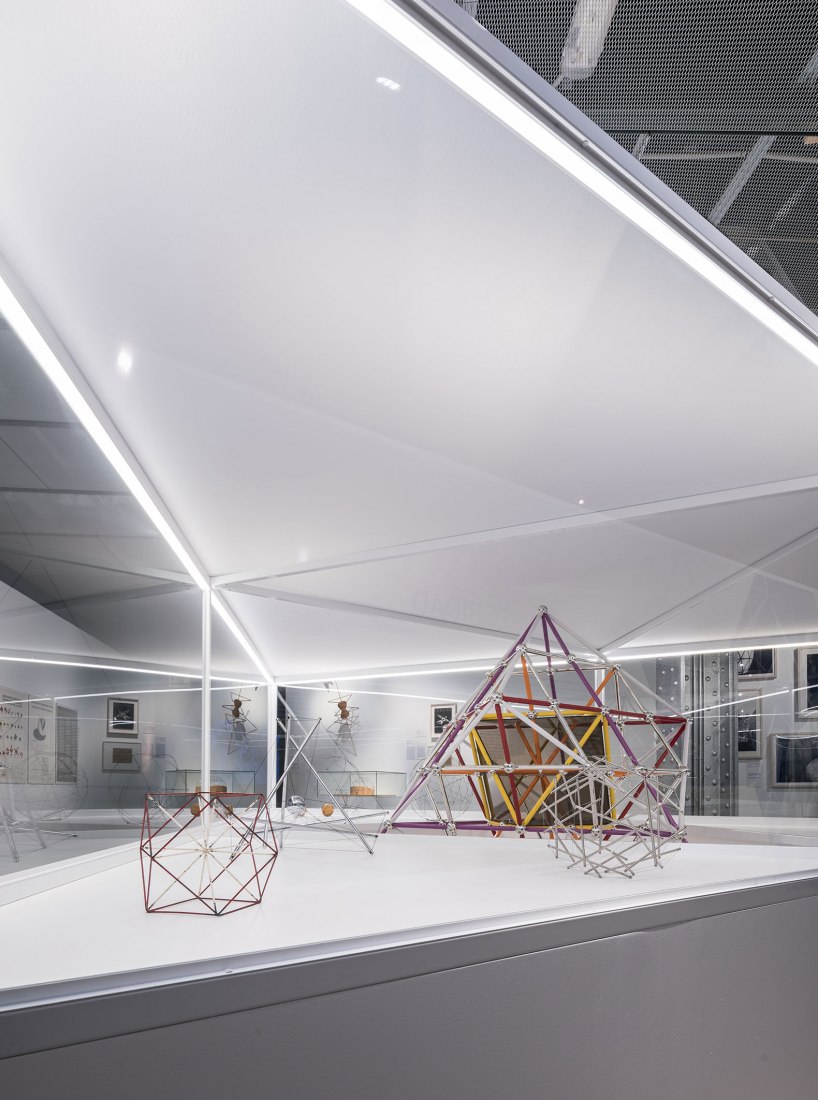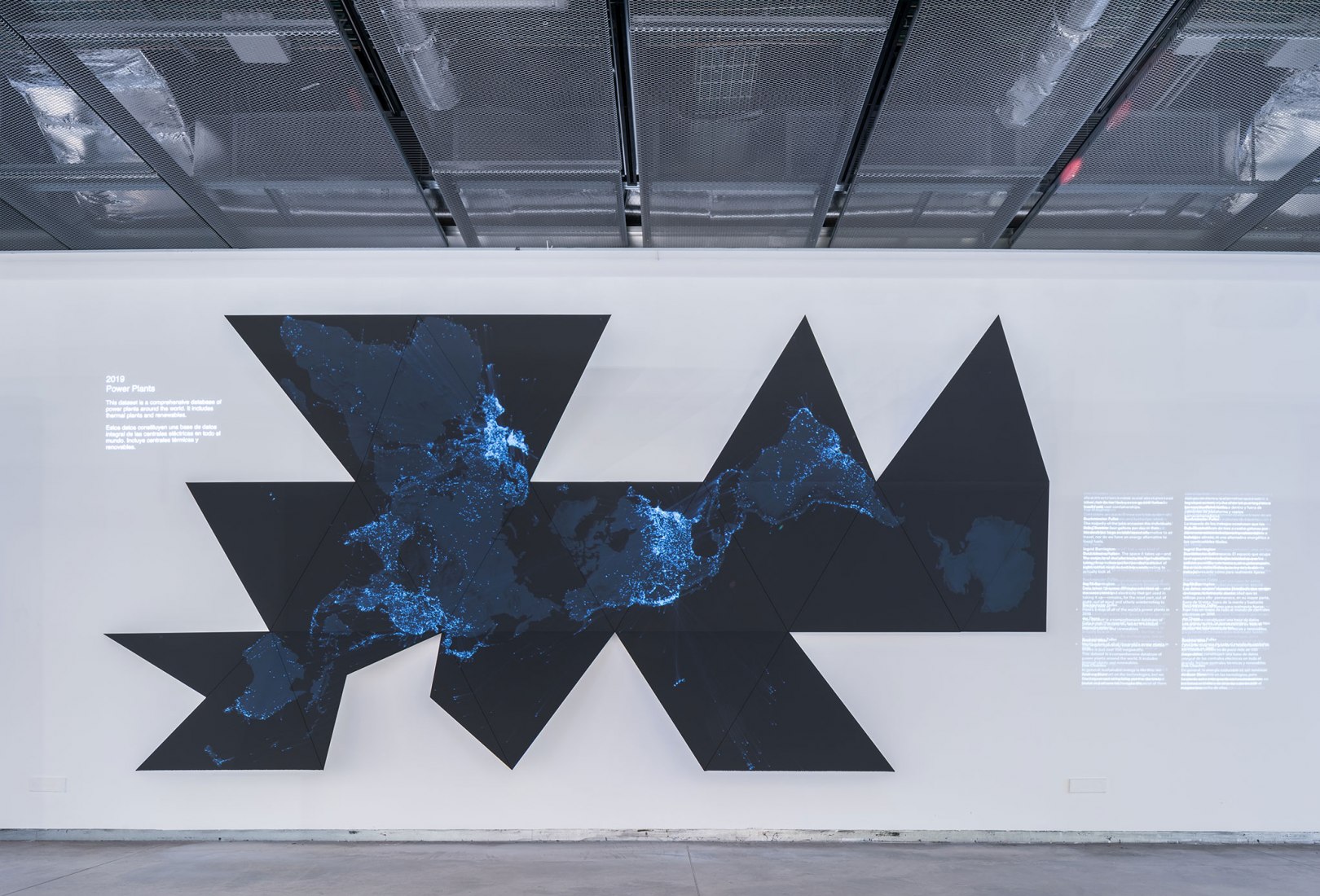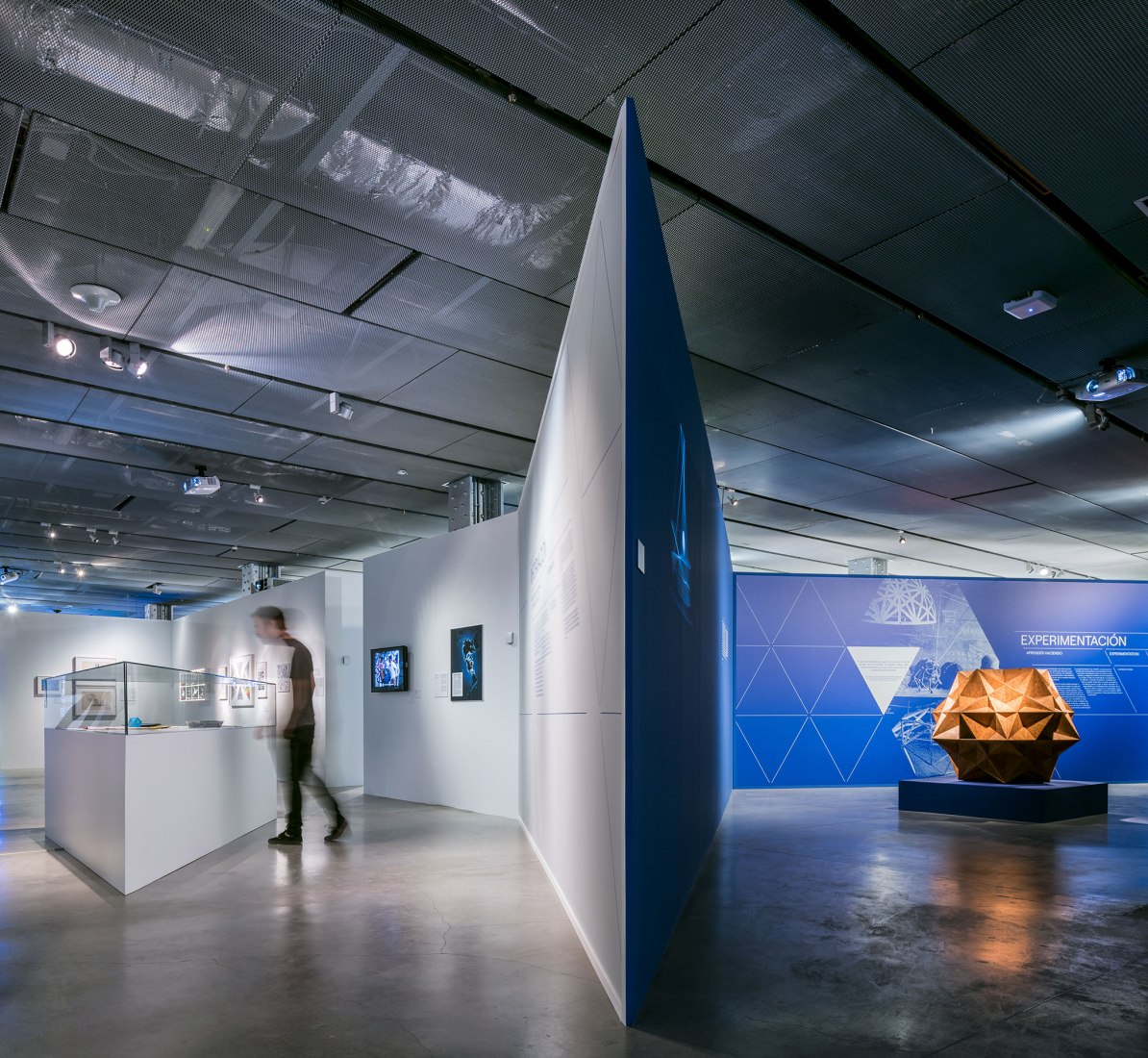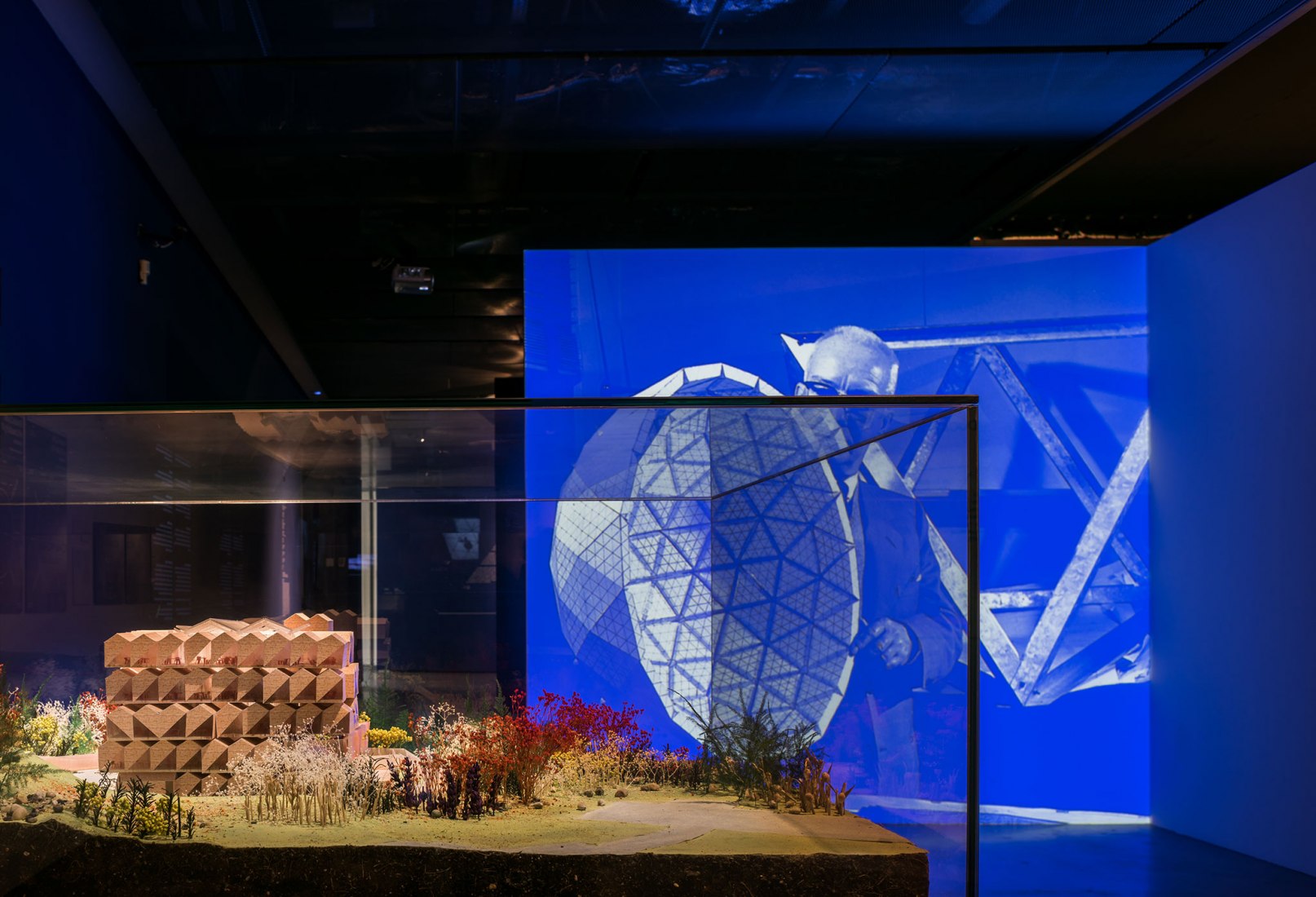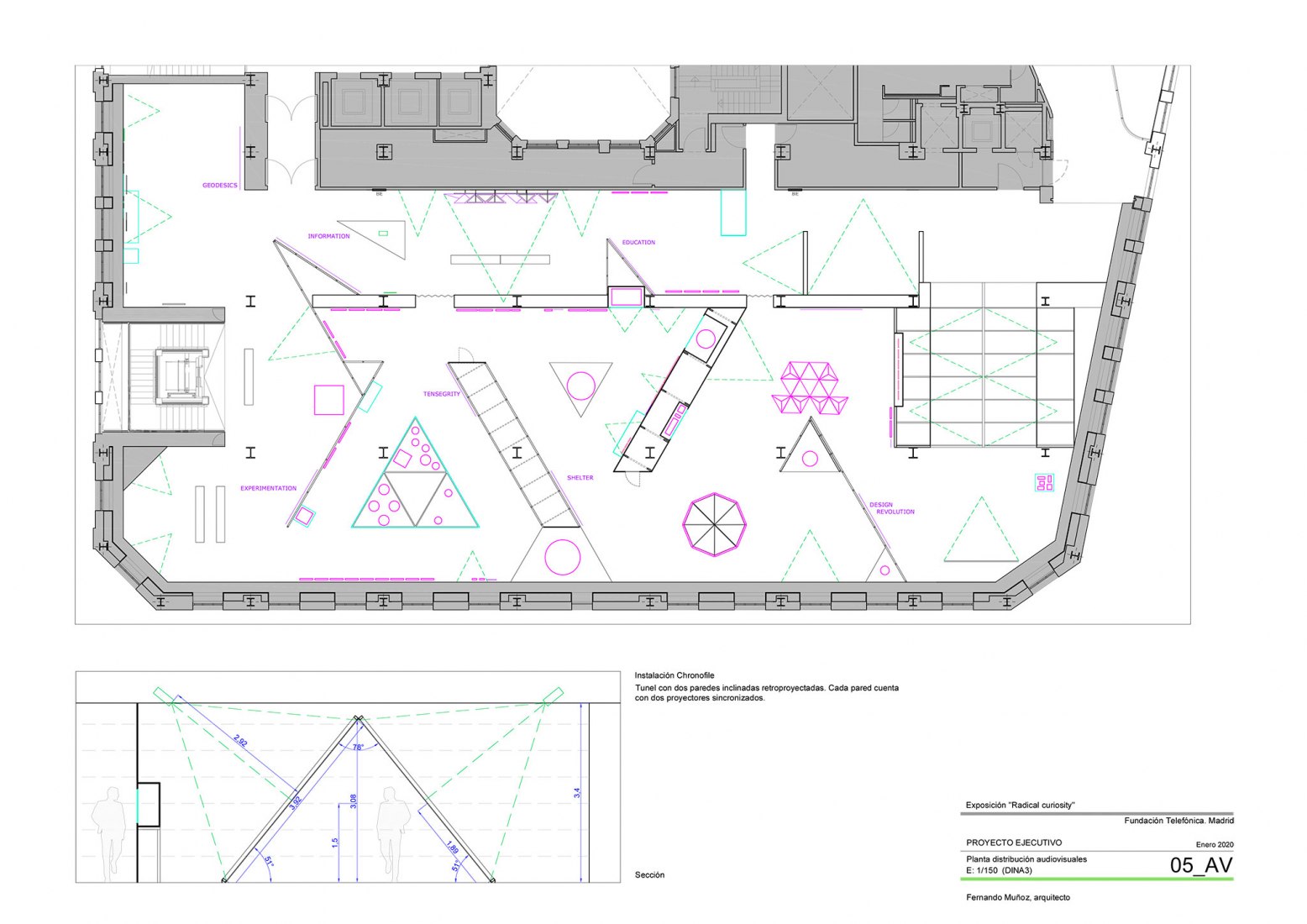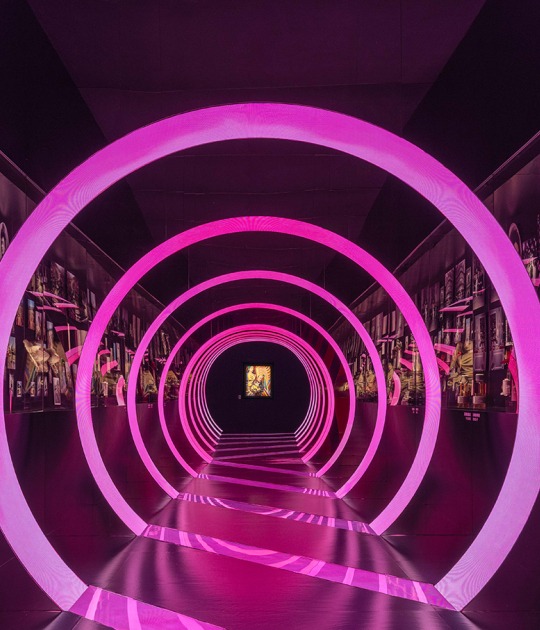The exhibition also included proposals from contemporary and contemporary artists who applied their ideas in architecture, art, and design. A group of characters among which we can include architects like Abeer Seikaly, Norman Foster and Chuck Hoberman, designers Neri Oxman and Joris Laarman, or artists Olafur Eliasson, Ruth Asawa, and Tomáš Libertíny.
Description of project by Smart & Green Design
For some, Fuller was the Leonardo da Vinci of the 20th century. Richard Buckminster Fuller (1895-1983) dedicated his life to finding solutions that would ensure that the world worked better for everybody. Through his thinking, he was able to anticipate some of the major crises of the 20th century surprisingly accurately.
A virtually unclassifiable visionary and investigator, Fuller created a seemingly never-ending body of work that crossed over disciplines such as architecture, engineering, philosophy and education, through a vision of design that was capable of changing the world. From questions of mobility and housing to education and the use of big data, his thinking included a number of questions that Covid-19 has put at the very heart of the world’s agenda.
The exhibition examines Fuller from the perspective of the reality of 2020, at a confused and uncertain time in which we are experiencing a series of the systemic crises that Fuller considered for over sixty years.
The exhibition design
Fuller studied the rules of geometry obsessively in order to put his ideas into practice. One figure was returned to again and again in this system of thought; the triangle. Following his lead, the spatial design proposal was developed based on this element.
The layout of the exhibition areas is the result of dialogue between the Dymaxion Map and the space. The twenty triangles of the icosahedron making up this original representation of the Earth are unfolded to generate a mesh that is used to divide up the space and construct all the museological devices. This triangular mesh is the basis of a large number of Fuller’s projects including the geodesic domes, the 4D and Dymaxion Houses, and his three-dimensional book, the Tetrascroll, in which the universe’s geometry is explained using the tetrahedron.
Dymaxion Chronofile Installation design
In 1917, at the age of twenty-two, Fuller decided to embark on an experiment that was to last until his death in 1983, in which he himself was the guinea pig. It consisted of creating an archive as detailed as possible of the life of a person born in 1895, which chronicled the world´s trans¬formation over the course of the new century.
Every day he collected and archived any personal docu¬ment pertaining to his activities that had passed through his hands. Conserved at Stanford University, the 145,000 personal documents that comprises the Dymaxion Chronofile make Richard Buckminster Fuller’s life one of the best documented in history.
To express the magnitude of this archive, we have designed a triangular rear proyected immersive tunnel showing a selection of these documents.
